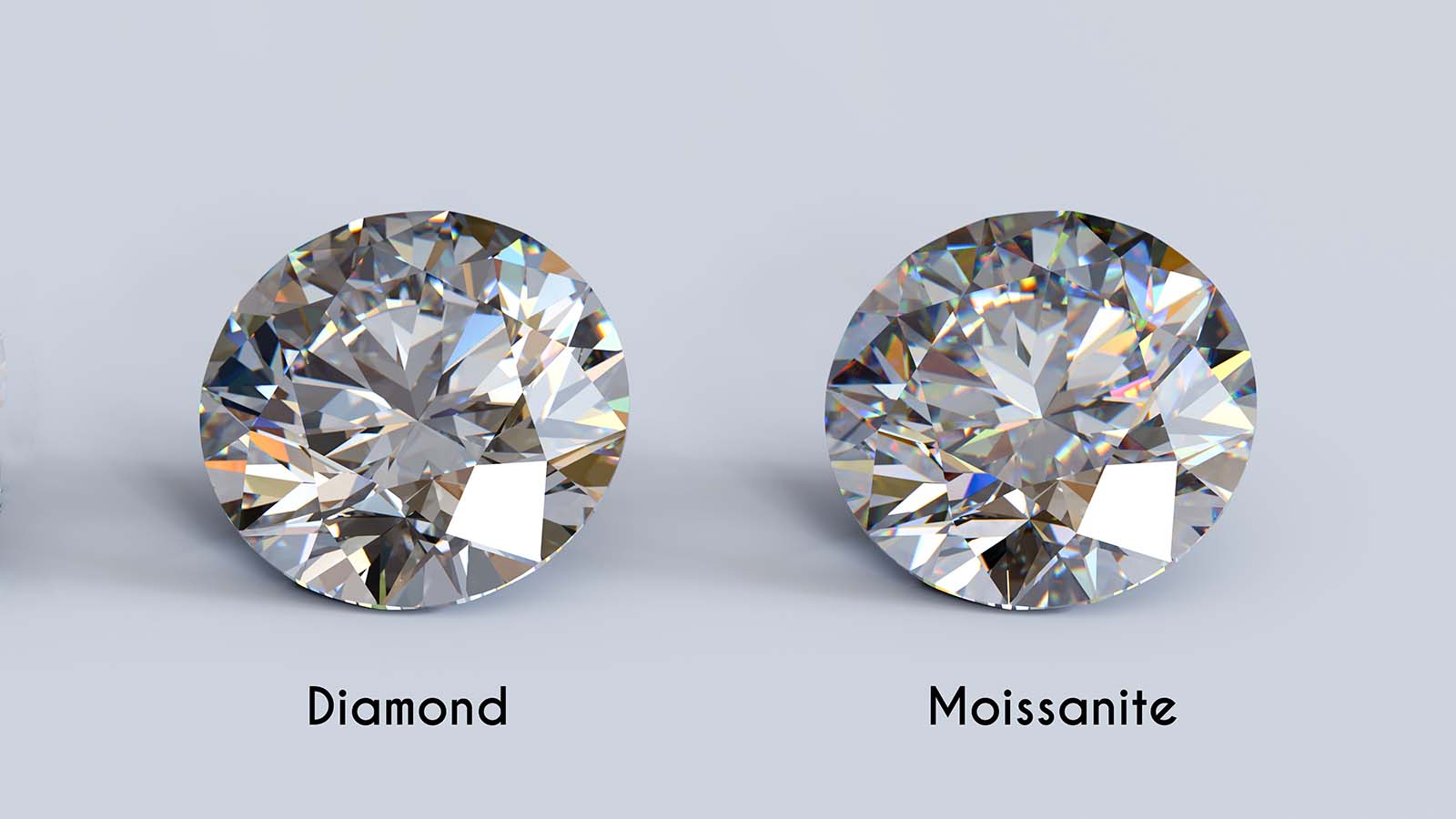Moissanite is a gemstone that has been gaining popularity in recent years as a diamond alternative. While it may look similar to a diamond, there are significant differences between the two. Distinguishing between moissanite and diamond can be challenging, but it is essential to know the differences to ensure that you are getting the gemstone you desire.
This comprehensive guide will provide you with all the information you need to know to distinguish moissanite from diamond. It will cover the differences in their physical and chemical properties, as well as their appearance and cost. Additionally, it will provide you with tips on how to choose the right gemstone for your needs and ethical and sustainable considerations to keep in mind when purchasing a gemstone.
Key Takeaways
- Moissanite and diamond may look similar, but they have significant differences in their physical and chemical properties.
- Understanding the differences between moissanite and diamond can help you make an informed decision when choosing a gemstone.
- When purchasing a gemstone, it is essential to consider ethical and sustainable factors.
Understanding Moissanite
Moissanite is a rare and unique gemstone that has gained popularity in recent years due to its fire and brilliance, which rivals that of a diamond. In this section, we will explore the composition, physical properties, history, and origin of moissanite.
Composition and Formation
Moissanite is composed of silicon carbide (SiC) and was first discovered in 1893 by French chemist Henri Moissan in a meteorite crater in Arizona. It is an extremely rare mineral in nature, but synthetic moissanite can be created in a laboratory setting.
Moissanite is formed under high pressure and temperature conditions, such as those found in meteorites and the Earth’s mantle. It is often found as inclusions in other minerals, such as diamond and quartz.
Physical Properties
Moissanite has a hardness of 9.25 on the Mohs scale, making it one of the hardest known substances. It also has a high toughness, which means it is resistant to chipping and breaking.
One of the most unique properties of moissanite is its fire dispersion, which is even higher than that of a diamond. This means that it can disperse light into its spectral colors more effectively, creating a rainbow effect.
Moissanite also has a high refractive index and double refraction, which means that it can bend and split light in a way that is different from most other gemstones.
History and Origin
Moissanite was first discovered in a meteorite crater in Arizona by French chemist Henri Moissan in 1893. It was later found in other meteorites and the Earth’s mantle.
In the 1990s, synthetic moissanite began to be produced for use as a gemstone. It quickly gained popularity due to its diamond-like appearance and lower price point.
Today, moissanite is a popular alternative to diamonds and is often used in engagement rings and other jewelry. Its unique properties and durability make it a desirable choice for those looking for a high-quality gemstone.
Understanding Diamonds
Diamonds are one of the most highly prized and sought-after gemstones in the world. They are rare, beautiful, and have a long history of significance. In this section, we’ll explore the composition and formation of diamonds, their physical properties, and their history and significance.
Composition and Formation
Diamonds are composed of pure carbon, arranged in a crystalline structure. They are formed deep within the earth, under intense heat and pressure. Most diamonds are formed in the mantle, between 100-200 kilometers below the earth’s surface. They are brought to the surface through volcanic activity, in rocks called kimberlites and lamproites.
Physical Properties
Diamonds are known for their brilliance, which is a result of their high refractive index. They are also very hard, scoring a 10 on the Mohs scale of mineral hardness. In addition, they have excellent durability and are resistant to scratching and wear. Diamonds come in a range of colors, from white to yellow, brown, and even pink and blue. The presence of inclusions and impurities can affect a diamond’s clarity and color.
History and Significance
Diamonds have been valued for their beauty and rarity for thousands of years. The first diamonds were discovered in India, and they were traded along ancient trade routes to the Middle East and Europe. In the 19th century, the discovery of diamond mines in South Africa led to a surge in diamond production and popularity. Today, diamonds are often associated with engagement rings and other romantic occasions.
Overall, diamonds are a unique and special gemstone, with a long history of significance. While there are diamond alternatives available, natural diamonds remain highly valued for their beauty and rarity.
Comparative Analysis
When it comes to distinguishing moissanite from diamond, there are several factors to consider. In this section, we will compare and contrast the physical differences, price differences, durability and hardness, color and clarity, and tester differences between moissanite and diamond.
Physical Differences
Moissanite is a mineral that is composed of silicon carbide, while diamonds are made of pure carbon. One of the most significant physical differences between the two is their refractive index. Moissanite has a higher refractive index than diamonds, which means it is more sparkly and has more fire dispersion. Additionally, moissanite may have double refraction, which can create an illusion of two facets in one.
Another physical difference between moissanite and diamond is their conductivity. Moissanite is electrically conductive, while diamonds are not. This means that a moissanite tester will detect electrical conductivity, while a diamond tester will not.
Price Differences
One of the most significant differences between moissanite and diamond is their price. Moissanite is a diamond simulant and is much less expensive than diamonds. High-quality moissanite may cost around $500 per carat, while diamonds can cost upwards of $10,000 per carat. This makes moissanite a popular diamond alternative for engagement rings and other jewelry.
Durability and Hardness
Both moissanite and diamonds are durable and hard, but diamonds are slightly tougher than moissanite. Moissanite has a hardness of 9.25 on the Mohs scale, while diamonds have a hardness of 10. However, moissanite is still a durable gemstone that can withstand pressure and everyday wear.
Color and Clarity
Moissanite and diamonds come in a range of colors, but white is the most popular for both. Moissanite tends to have a yellow or green tint, while diamonds are usually colorless or near-colorless. When it comes to clarity, moissanite may have more imperfections than diamonds, which can affect its overall appearance.
Tester Differences
Moissanite testers and diamond testers work differently. Moissanite testers detect electrical conductivity, while diamond testers rely on thermal conductivity. It is essential to use the correct tester for each gemstone to get accurate results.
In conclusion, while moissanite and diamonds share some similarities, they have several distinct differences. When choosing between the two, it is essential to consider factors such as price, durability, and appearance. Whether you choose moissanite or diamonds, both are beautiful gemstones that can make a stunning addition to any jewelry collection.
Ethical and Sustainable Considerations
When choosing between moissanite and diamond, ethical and sustainable considerations are important factors to keep in mind. Both gemstones have their own unique set of ethical and environmental concerns, and it is important to be informed of these issues before making a purchase decision.
Ethical Mining and Production
Diamond mining has long been associated with unethical practices, including forced labor, child labor, and environmental damage. However, many diamond mines have made efforts to improve their labor practices and reduce their environmental impact. The Kimberley Process Certification Scheme was established to help prevent the trade of conflict diamonds, and many mines are now certified as ethical and sustainable.
On the other hand, moissanite is a lab-created gemstone, which eliminates the ethical concerns associated with mining. However, it is important to consider the ethical practices of the laboratories that produce moissanite. Look for companies that prioritize ethical labor practices and environmental sustainability.
Sustainability and Environmental Impact
Diamond mining has a significant environmental impact, including deforestation, soil erosion, and water pollution. However, many diamond mines are now taking steps to reduce their environmental impact, such as using renewable energy sources and implementing water conservation measures.
Moissanite is a more sustainable option, as it is lab-created and does not require mining. However, the production of moissanite still has an environmental impact, as it requires energy and resources to create. Look for companies that prioritize sustainable practices, such as using renewable energy sources and reducing waste.
When considering the ethical and sustainable impact of moissanite and diamond, weighing each option’s pros and cons and making an informed decision based on your values and priorities is important.
Choosing the Right Gemstone
When it comes to choosing between moissanite and diamond, there are several factors to consider. Here are three important sub-sections to keep in mind: Personal Preferences, Budget Considerations, and Jewelry Type.
Personal Preferences
Your personal preferences play a big role in choosing the right gemstone. Consider what you value most in a gemstone. Do you prefer a high level of brilliance and fire, or are you more interested in a unique gemstone that stands out from the crowd? Moissanite is known for its sparkle and brilliance, while diamonds are coveted for their fire and high-quality appearance. Think about what you want your gemstone to say about you and your style.
Budget Considerations
Budget is another important factor to consider. While diamonds are typically more expensive than moissanite, there are many affordable options available in both gemstones. If you’re on a tight budget, moissanite may be the better choice. It’s a diamond alternative that is more affordable than a natural diamond but still has plenty of sparkle and beauty. On the other hand, if you’re looking for a high-quality, sparkly gemstone and have a larger budget, a diamond may be the way to go.
Jewelry Type
The type of jewelry you’re looking to create also plays a role in choosing the right gemstone. For example, if you’re looking for an engagement ring, you may want to consider a diamond for its durability and traditional appeal. However, if you’re looking for a unique gemstone for a pendant or other jewelry piece, moissanite or another gemstone like sapphire or emerald may be a better fit. Additionally, lab-created diamonds and moissanite are both great options for those who want a more affordable diamond alternative.
In summary, when choosing between moissanite and diamond, it’s important to consider your personal preferences, budget, and the type of jewelry you’re looking to create. Both gemstones have their unique qualities and benefits, so take the time to weigh your options carefully before making a decision.
Frequently Asked Questions
What are the differences between moissanite and diamond?
Moissanite and diamond differ in several ways. Moissanite is a lab-created gemstone that is made up of silicon carbide, while diamond is a naturally occurring mineral made up of carbon. Moissanite is also more brilliant and has more fire than diamond, which means it reflects more light and sparkles more. However, diamond is harder and more durable than moissanite, making it more resistant to scratches and chips.
Can moissanite be mistaken for a diamond?
Yes, moissanite can be mistaken for a diamond. Moissanite is often used as a diamond substitute because of its similar appearance. However, there are some differences between the two stones that can help distinguish them, such as their brilliance and hardness.
How do you test if a stone is a moissanite or diamond?
There are several ways to test if a stone is moissanite or diamond. One way is to use a diamond tester, which uses electrical conductivity to determine if a stone is a diamond or not. Another way is to use a loupe or microscope to examine the stone’s properties, such as its brilliance and fire. You can also use a thermal conductivity tester, which measures how quickly a material conducts heat, to distinguish between the two stones.
Are there any downsides to choosing moissanite over diamond?
While moissanite has many advantages over diamond, there are some downsides to choosing it over diamond. One downside is that moissanite is not as hard or durable as diamond, which means it is more prone to scratches and chips. Additionally, moissanite is not as rare as diamond, which means it may not hold its value as well over time.
How does the price of moissanite compare to diamond?
Moissanite is generally less expensive than diamond. The cost of moissanite depends on its size and quality, but it is typically less expensive than a comparable diamond. This makes moissanite a popular choice for those who want the look of a diamond without the high cost.
Do diamond testers accurately detect moissanite?
Diamond testers are designed to detect diamonds, not moissanite. However, some diamond testers can detect moissanite as well, although not all testers are accurate. It is important to use a reputable diamond tester that is known to detect moissanite accurately.





